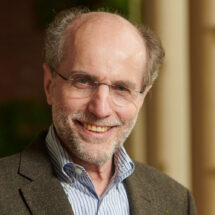
Pietro De Camilli will give the 2018 César Milstein Lecture on Tuesday 5th March at 4.00pm in the LMB’s Max Perutz Lecture Theatre. The title of the lecture is ‘Intracellular membrane contact sites, lipid dynamics and neurodegeneration’. The event is open to anyone in the local area who is interested in attending.
Pietro is currently the John Klingenstein Professor of Neuroscience and Professor of Cell Biology at Yale University School of Medicine. His research concentrates on the study of the mechanisms underlying the dynamics and traffic of intracellular membranes, with emphasis on membrane transport reactions involved in neurotransmission. His studies on synaptic vesicle dynamics have contributed to the general fields of exocytosis and endocytosis. His discovery and characterisation of the role of phosphoinositide metabolism in the control of endocytic membrane flow have broad implications in the fields of phospholipid signalling and membrane traffic. Building on these studies, he has become interested in the mechanisms that control membrane lipid homeostasis and in the dysfunction of these mechanisms in disease.
Pietro earned his M.D. degree from the University of Milano, Italy. He then became a postdoctoral fellow with Paul Greengard at Yale, and subsequently an assistant professor in the Yale Department of Cell Biology. After a brief return to Milan, he moved back to Yale in the late 1980s. In 1992, he became a Howard Hughes Medical Institute investigator and from 1997 to 2000 he was Chair of Yale Department of Cell Biology. Since 2015 he has served as Chair of the Department of Neuroscience and Director of the Kavli Institute for Neuroscience, at Yale. He is an elected member of EMBO, of the National Academy of Science (USA) and of the National Academy of Medicine (USA).
Lecture abstract:
A defining characteristic of eukaryotic cells is the presence of intracellular membranes. The most abundant endomembrane system is the endoplasmic reticulum (ER), which participates in a multiplicity of functions, including protein and lipid synthesis, a variety of metabolic reactions and intracellular signalling. The ER extends in all regions of neurons, including the most distal compartments of dendrites and axons. While membranes of the ER are functionally connected to all membranes of the secretory and endocytic pathways via vesicular transport, they only physically fuse with each other and with vesicles involved in retrograde transport from the Golgi complex. However, close appositions between the ER and other membranes mediated by tethering proteins play important roles in cell physiology, and their dysfunctions result in disease, including neurodegeneration. In my talk I will discuss the properties, regulation and functions of proteins that tether the ER to other membranes with emphasis on proteins that mediate lipid exchange between bilayers independently of vesicular transport. I will focus in particular on VPS13A and VPS13C, a new class of lipid transport proteins whose mutations result in neuroacanthocytosis (a Huntington’s disease-like condition) and Parkinson’s disease respectively.
Background information:
The César Milstein Lecture, named in honour of the LMB Nobel Laureate César Milstein, is one of a series of lectures organised by the LMB and given by eminent scientists from around the world. César was born in Argentina in 1927. After completing PhDs in both Buenos Aires and Cambridge, and a brief spell of research back in Argentina, he joined the LMB in 1963 and spent the rest of his life here. He developed an early interest in immunology, and his research concentrated on antibody structure and diversity. In the early 1970′s he and his post-doc Georges Köhler developed the technique to produce monoclonal antibodies, for which they were jointly awarded the 1984 Nobel Prize in Physiology and Medicine. This technique has been used for diagnostics and developed further by LMB colleagues for therapeutic applications, leading to the creation of several MRC spin-out companies. César continued his research on how somatic mutation arises in immunoglobulin genes. He died in Cambridge on 24 March 2002.
Further references:
Pietro De Camilli lab
LMB Named Lectures
Poster for the Lecture